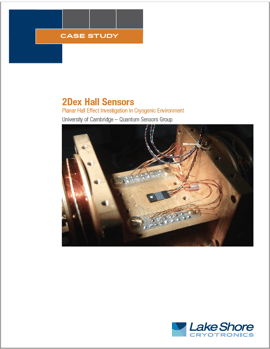 The Quantum Sensors Group at Cambridge University develops ultra-sensitive superconducting detectors to detect radiation across the electromagnetic spectrum. To examine the effects of magnetic fields on these detectors, a 3-axis cryogenic magnetic field generator was built, containing three pairs of superconducting coils arranged orthogonally to create field in any direction. But they had a challenge: They wanted to confirm the fields at the location of their detector rather than rely on calculated or simulated results.
The Quantum Sensors Group at Cambridge University develops ultra-sensitive superconducting detectors to detect radiation across the electromagnetic spectrum. To examine the effects of magnetic fields on these detectors, a 3-axis cryogenic magnetic field generator was built, containing three pairs of superconducting coils arranged orthogonally to create field in any direction. But they had a challenge: They wanted to confirm the fields at the location of their detector rather than rely on calculated or simulated results.
This turned out to be more difficult than first expected as existing cryogenic Hall sensors demonstrated a planar Hall effect (PHE) that resulted in measurement errors when the induced field was not orthogonal with the sensor (a common occurrence when producing fields in arbitrary directions).
This new case study examines how our new 2Dex™ Hall sensor, in combination with our F71 teslameter, provided a solution. Specifically, it enabled the group to verify their experimental 3-axis field generator setup — and without experiencing noticeable error due to PHE.

